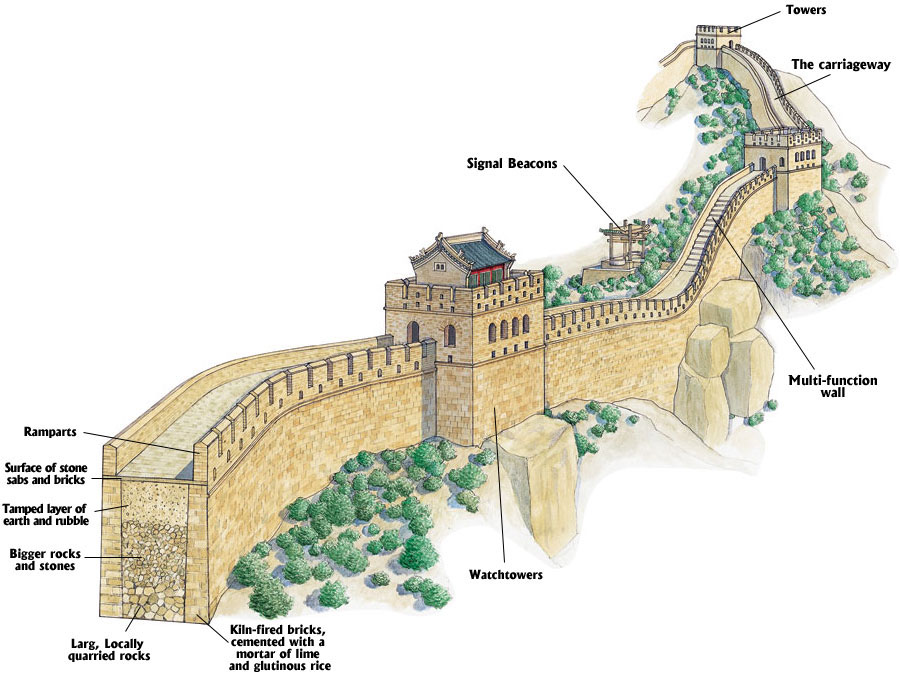After approaching the end of week three of the semester, I am more intrigued in this class because of the interesting history of China. This week we discussed the Great Wall of China, including the myths and the truths of the wall and how it came to stand to be the historical landmark it is today. For Tuesday’s class, I decided to read the book by Arthur Waldron called The Great Wall of China: From History to Myth, which provided a lot of information of the Great Wall of China, especially the interactions between the different clans near each other. Many of the walls were built as a military defense against the invasion of nomads, as well as a way to establish land boundaries, some of which exceeded their original territory size. It was surprising to hear about the different myths about the Great Wall that actually are not true, such as the myth that the Great Wall was built in a day or built under the rule of one emperor. The Great wall extends for about 13,000 miles and was built over 2,300 years, which is insane to think about! While building this wall it is important to think about the different developments that were made during that time such as the materials used to make the wall. Seeing photos of the wall shown in class with the start of it made out of earth as well as wood instead of brick or granite changed my mindset for how the wall was constructed because I only had prior history of what the wall looks like today. One thing I wonder about is if there was competition in making the wall, such as maybe different regions wanted to appear superior to others, so they wanted to make their wall look more advanced, so that they would appear more powerful or better than other regions. If this is true, there could be some positives and negatives because although they could make themselves look better, the nomads could see them as more of a threat and target to attack since they did not find the Great Wall as too much of a hinderance to their attacks.

In class on Thursday, the class took a trip to the library to learn about credible sources to use for any research or essays that need to be written with citable sources. For this activity, I was assigned to read article 3, which talked about how the British became obsessed with Chinese art. I found this article to be very vague in their wording over information and did not explain information about art in the way I had hoped because there was more information over the contributors who donated Chinese art to the British museum instead of providing more information about the art itself and why one should be interested in this art or how it differs from past artworks. There a big controversy over this topic because it is not clear if the British stole the art or if it was sold to them. Without credible sources without bias, it would be difficult to find valuable and important information that one could use for an assignment. The last two articles provided for this assignment are credible sources because they were found on the library database, have credible authors, and do not provide to much bias. It is important to find the correct sources an assignment because otherwise the topic could not be written about in the correct light.
Waldron, Arthur. The Great Wall of China: From History to Myth. Cambridge Studies in Chinese History, Literature, and Institutions. Cambridge England: Cambridge University Press, 1990.
Lindesay, William. The Great Wall in 50 Objects. Paperback ed. Melbourne, Vic.: Viking, an Imprint of Penguin Books, 2015.